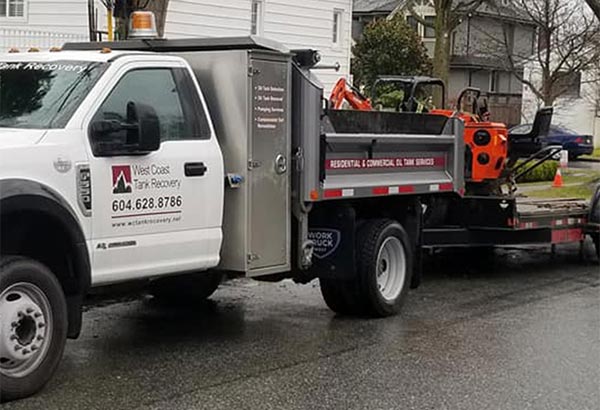 Fully Licensed and Insured
Fully Licensed and Insured Request an Oil Tank Scan
Request an Oil Tank Scan Request a Free Estimate
Request a Free Estimate

If there is one question that is being asked frequently at the current time, it is ‘is residential oil tanks removal in Vancouver still commonplace?’. The short answer to this is yes, as a large number of tanks are still being removed each year.
Understanding the importance of residential oil tanks removal in Vancouver is certainly knowledge that every homeowner, or prospective homeowner, should have. Below, we outline a quick synopsis underlining the continued relevance of oil tanks removal, along with documenting the removal process.
A Brief Synopsis Of Residential Oil Tanks Removal In Vancouver
Approximately, oil tanks have a service life of 20 years or so, which means that after this time they are prone to corrosion. As a result, leaks can then occur from the oil tank, where any substances left within the tank can contaminate the surrounding area.
Even if the oil tanks were drained previously, there will inevitably be traces of substances that can lead to problems when the oil tank corrodes. This creates a number of issues for the homeowner, as you may expect, particularly as they are held liable for any damage caused. In addition to this, many of those wanting to sell their homes or conduct repairs and extensions to their property, may need to ensure there are no oil tanks buried before gaining planning permission.
Consequently, residential oil tanks removal in Vancouver is highly relevant, and a task that should certainly not be taken lightly by home and property owners.
How The Process Of Residential Oil Tanks Removal In Vancouver Works
There are four main stages to the removal process, which are detection, removal, disposal and backfill. The detection phase involves a specialist company utilizing a combination of metal detection and ground-penetrating radar, in order to determine if there is a buried oil tank on the property, and its precise location.
If there is one located, then it should be removed immediately, with the same specialist company able to safely excavate and remove the tank. Once it is removed, it then needs to be disposed of correctly, before the backfill process can occur. Backfill includes testing the nearby soil for contamination and working to make it a safe and uncontaminated area, along with returning it to its previous appearance.
Find Out More
For more information on residential oil tanks removal in Vancouver, why not contact a specialist company today for help and advice.